
By Natasha LeNeave
*Preface: With spending a lot of time outdoors, remember to apply sunscreen often in order to protect your skin!*
In a fast-paced, digitally connected world, nature has a remarkable ability to heal our mental well-being. Take time to step away from the lecture halls and immerse yourself in nature. This article explores the profound impact that nature has on mental health and goes into depth about its benefits and the ways that we can apply this to our college experience.
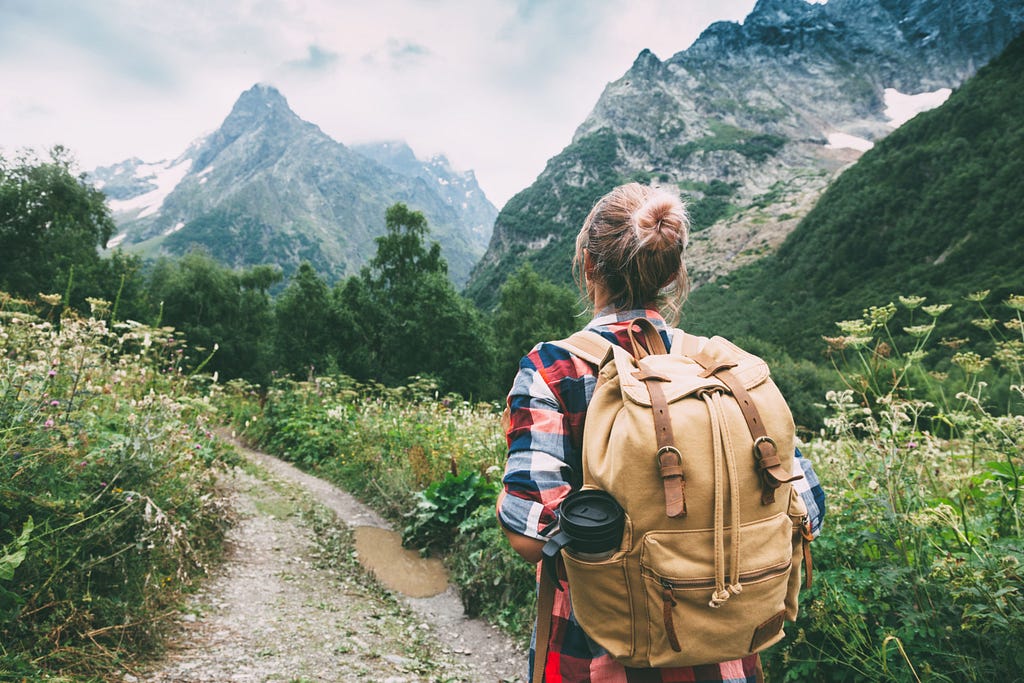
The benefits of nature are everywhere
The Mental Health Foundation says that “Nature is an important need for many and vital in keeping us emotionally, psychologically and physically healthy.” They go on to say that nature can mean so many different things. Here are some examples:
- Green spaces — forests, woods, parks, some mountains, etc.
- Blue spaces — beaches, rivers, ponds, wetlands, etc.
- Small spaces of nature — private garden, trees, window boxes, indoor plants, etc.
With the definition of nature being so broad, it is easy for nature to be available to almost anyone, wherever we are in the world.
“Nature comes in all shapes and sizes.” — Kirsten Weir
Weir goes on to say that “It’s clear that getting outside is good for us.” Although it is good, there are certain environments that may have larger benefits and impacts. Blue spaces may actually have slightly more restorative effects.
It is true that we can find benefits of nature wherever we are, but areas that are more remote can have larger benefits. An environmental psychologist, Mathew White, surveyed 4,515 residents of the United Kingdom and found that more people felt connected to nature when they visited spaces that were more coastal and rural than when they visited green spaces that were more urban.
Whenever we have the opportunity to, we should take advantage of green and blue spaces.
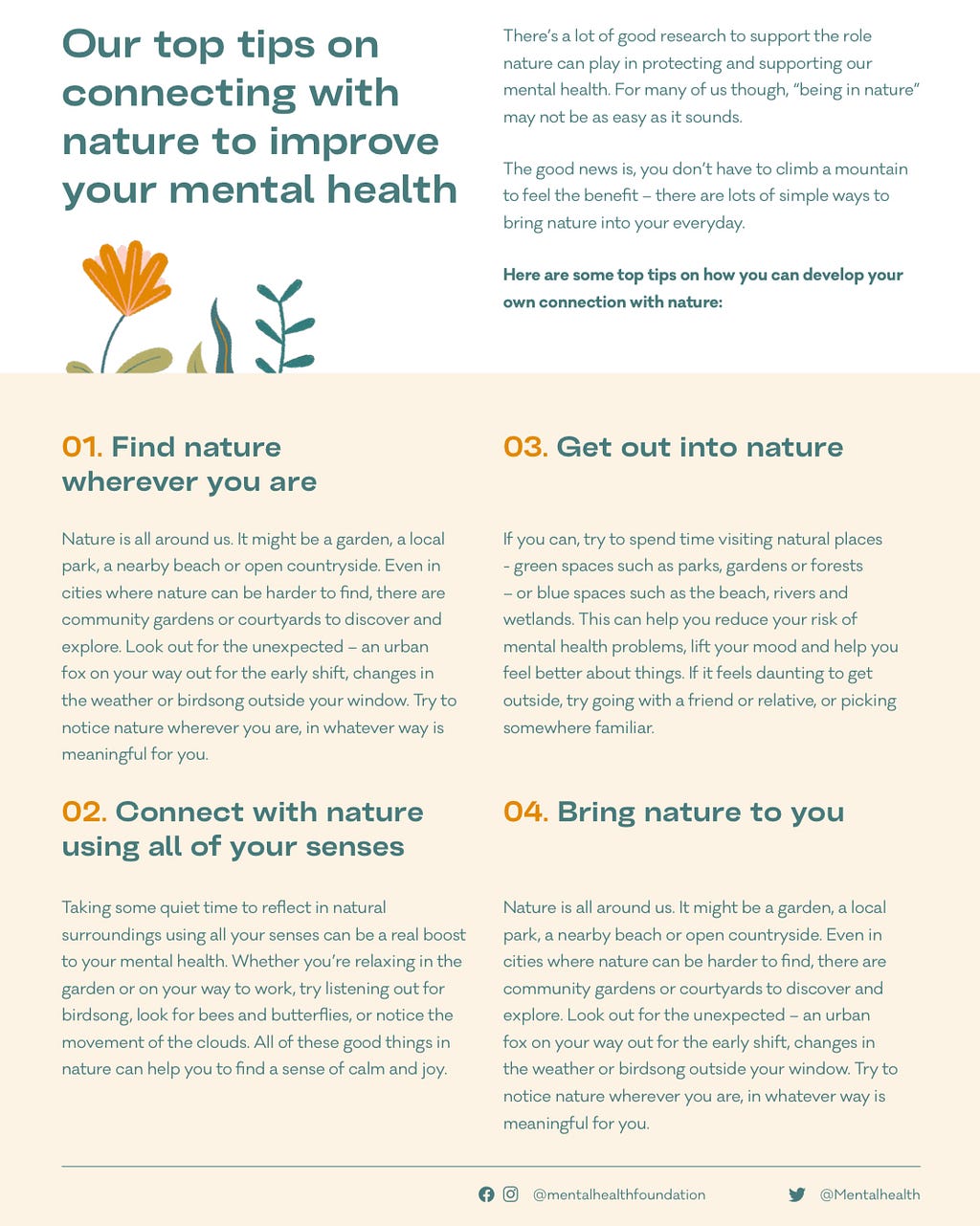
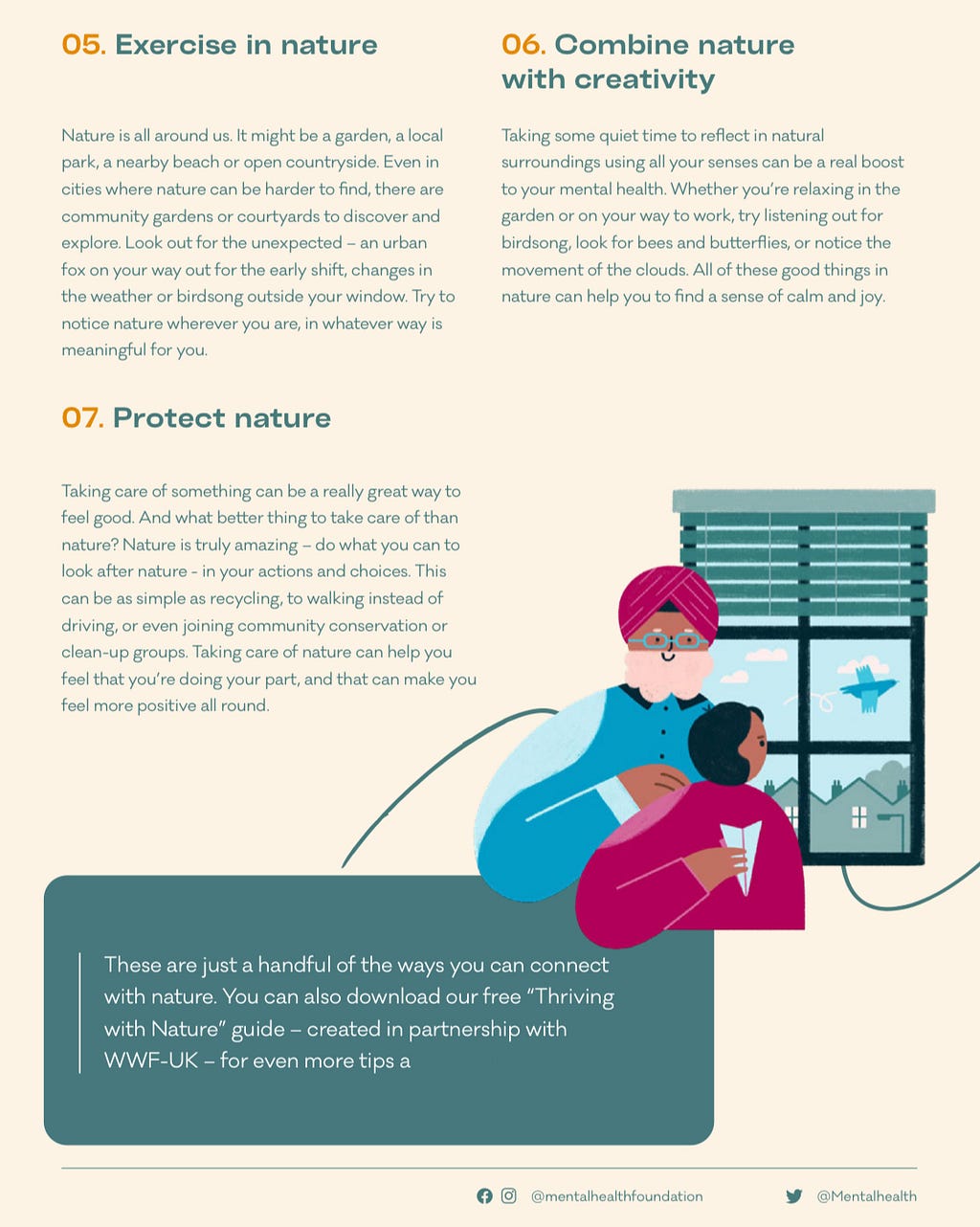
COVID-19
One of the ways that the Mental Health Foundation developed their study was by researching what kind of impact nature had during COVID-19. They found that outdoor time was one of the biggest ways that helped people through COVID. With this research, it helped them solidify that being outdoors and having a connection with nature can provide so many health benefits and teaches us that we can use these findings to improve our overall well-being.

Screen time and how to optimize our nature experience
In today’s day and age, we spend a lot of time on screens. How much time do you think that the average person spends looking at a screen each day? The American Psychological Association says that “For most Americans, that number clocks in at more than 10 hours, according to a 2016 Nielsen Total Audience Report.” Due to the huge increased impact of technology on our lives, less people are spending time outdoors.
Going along with this, Utah State University has found that “Adults and adolescents in the U.S. spend over 90% of their time indoors and more than seven hours per day looking at screens.” The more time that we spend on screens compared to spending that time in nature can contribute to mental health issues such as anxiety and depression. When we spend more time with nature, it can benefit our mental health by helping us get better sleep, reducing our amounts of stress, and making us happier.
Sometimes making time in our busy lives can be difficult. Between school, assignments, and work, it can seem almost impossible to get out and spend time with nature. Even with the hustle and bustle of daily life, there are some easy ways to increase the amount of time that we spend with nature no matter where we are. Some of these things include:
- Take breaks outside: When we have a few minutes in between assignments or plans, we can consider spending that time outside. Whether it be taking a short walk, eating a snack or meal outside, or sitting outside to take a phone call, we can use these moments outside to connect with nature. We can listen to the birds chirping, feel the sun on our face, look at the beautiful trees and flowers, or feel the breeze on our skin.
- Visit nearby nature sites: This is a good free or low cost option. You can go to parks, public gardens, and streams. Maybe go for a picnic, or plan an activity.
- Bring nature inside: With this option, you can take a space and bring nature to you! Buy some live plants. You can also take every chance to let the natural light in to brighten your space.
- Plan a nature trip: Need something to do on the weekend? Plan a day trip with your friends to do some fun outdoor activities. Some examples could be to go camping, swim in a river, go to a national park (ie. Natural Bridge), go on a hike, go star gazing, etc.
Although a lot of these activities or tips are small, they can still help you spend more time connecting to nature. Hopefully these are some better alternatives to screen time and can help you have a deeper appreciation for the outdoors and the benefits that it has on your mental health.
We live in such a beautiful place that we might as well take advantage of everything it has to offer. A big reason that people continue to struggle with mental health is that they don’t know what steps they can take to help ease that pressure. Nature isn’t a cure for mental health, but it can certainly provide some help and benefits.

“Germany is pretty cold and when I was in Germany, we used a lot of public transportation. I remember when we would wait for our buses, we were bundled up in our coats, but every now and then, when there was an ounce of sunlight, it was the best thing ever. And I would just stand in the sun and let it heat me up, and it made me so happy just standing in the sun. I didn’t have to do anything and I didn’t have to talk to anybody to feel that. It was literally just standing in the sun that was so good. But also, just being outside in general, especially looking at the stars. The stars are just so beautiful and they remind me of how small we are yet how significant we are in the universe as well. Every time I go outside and go stargazing that’s what I think about. How small we are in the universe and how many other beautiful creations and worlds there are out there. But we’re still important in our own way and I think that’s really beautiful.” — Breanna McGill, Psychology Major, ‘25
How much time do I need to spend outside to receive benefits?
Researchers say that “Just a bit of time spent with nature each day can reduce college students’ stress.” These researchers, from Cornell University, did an experiment studying how being in nature affects 15–30 year olds. The purpose of this study was to see how much time college students should spend outdoors. According to their research, the most efficient amount of time spent sitting or walking outdoors in natural environments was 10 to 50 minutes. Doing this would more efficiently improve their focus, their mood, and their heart rate and blood pressure.
When you think about this, 10 minutes is such a short amount of time but spending it in nature can provide so many benefits.
“We firmly believe that every student, no matter what subject or how high their workload, has that much discretionary time each day, or at least a few times per week” — Gen Meredith, associate director of Cornell’s Master of Public Health Program
They go further into the study, mentioning that being outdoors for longer than 50 minutes doesn’t have a decline in the results but instead the benefits tend to plateau.

How colleges can improve outdoor functionality
“Spending time outdoors can aid people in a variety of categories: “attention and cognition, memory, stress and anxiety, sleep, emotional stability and self-perceived welfare or quality of life. Frontiers of Public Health” –Noah Lyons/EdSource
While doing my research, one of the quotes that I read really stuck out to me. Monica Fosnocht said “For a lot of students that are struggling with mental health, or even students who don’t and are just stressed, it’s really helpful to get a nice, big dose of vitamin D and get outside so that we can get our brains functioning optimally.”
One of the best things that a college can do is provide their students with outdoor spaces that they can utilize. Here at Southern Virginia University, we have multiple outdoor tables and chairs, benches outside of some buildings and dorms, a fish pond, sitting areas, and a lot of green open spaces.
When it gets warm, I often see a lot of students pitching their hammock and working on assignments outside.
At San Diego State University, they have a turtle pond. There is one student, Natale Canepa, a fifth-year journalism and media studies major, who frequents the pond. When asked about why he does so, he answers “I see the turtle pond as a place of magic; I come here and I’m mesmerized by the sights, sounds and smells. I think the best moments in life are the quiet, slow moments when you can hear the rustling of the leaves in the wind, hear the splashing of the water and look at the little turtles swimming around in the pond.”
On our campus, our fish/turtle pond is pretty central to the campus. I frequently find students sitting near it, doing homework, eating a snack, or just watching the fish and turtles swim around.
Another way that our campus helps students is by having a group dedicated to helping students and promoting activities that are usually outdoors. This is called the “Wellness” group. They are primarily promoting health and fitness as well as mental health care. Their group on the Knight app talks about how they are “dedicated to helping students improve their overall level of wellness”. They then invite everyone to join them for tips on wellness and to participate in their events. Their biggest event is that they host a group exercise class that focuses on low-intensity fitness options such as Body Balance and Core as well as high-intensity fitness options such as Body Attack and Body Combat. They try to do these workout classes outdoors when the weather permits. They also host outdoor activities such as hikes, river walk and talks, kayaking, scavenger hunts and more. Some other things that they have promoted are step challenges, wellness podcasts, sleep initiative challenges, meditation, and therapy opportunities.
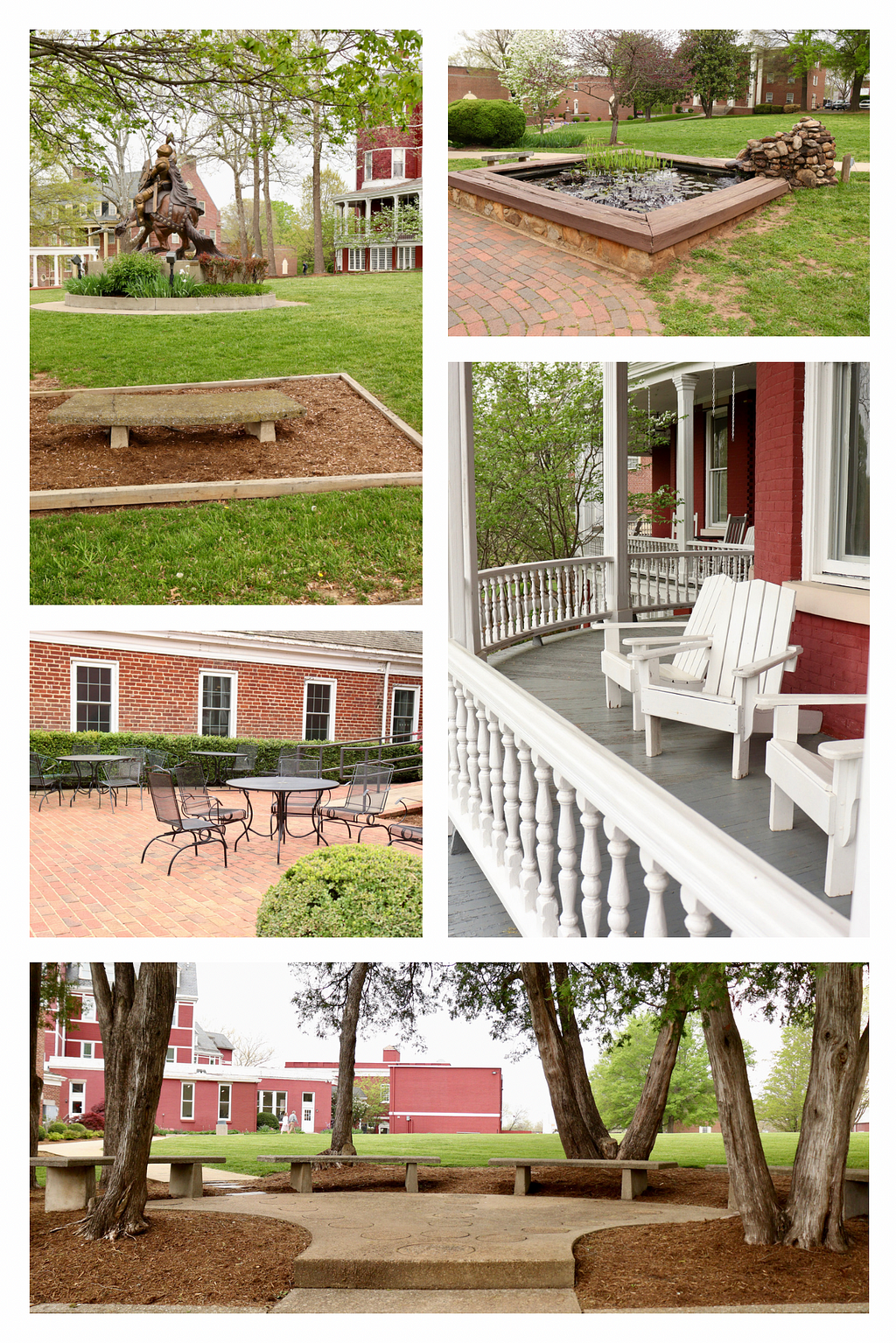

“My favorite thing in the world is when the weather starts to get warmer because that means I can actually spend time outside and not worry about wearing a jacket and too many layers and then getting super super hot. But when it’s finally starting to get warmer out, my favorite thing to do is go and grab a blanket and just lay out in the sun and it just makes me so happy thinking about being outside.” — Samantha Young, Family Human Development Major, ‘26
Top Benefits of Studying Outside
“Getting out the door can give you a physical and mental boost to help you ace your next exam” — Saint Leo University
Here are some of the top statistics about the amount of time that students spend studying from a National Survey of Student Engagement:
- Twenty-six percent of college students study anywhere from six to 10 hours per week
- Roughly 43 percent study more (11 to 20 hours each week)
- 21% reporting that they often spend more than 21 hours weekly when preparing for their college courses
Benefits of studying outside:
- Improved mental health — It is backed by science that spending time outside helps you feel better mentally. Studying outside can be linked to improved attention, reduced stress, better mood, increase in empathy, and lower health risks.
- Fewer colds and flus — Studying outside can help boost your body’s level of vitamin D which can help keep your bones strong and healthy, improve immune system functions, and fight off bacteria and viruses.
- Better sleep — When you spend more time outside, the natural daylight can actually help your sleep. It does this by helping you fall asleep faster, sleep for longer, and have an improved quality of sleep.
- More energy — College can really be detrimental to your energy levels. Between classes, assignments, studying, and any other commitments, you have a lot on your plate. When you spend time outside, even if it’s just studying, nature can provide you with energy and help you reduce your feelings of tiredness. Exercising outdoors can also help you gain as much energy as possible.
- Increased creativity — Being outdoors can open your mind.
- Less boredom — studying outdoors can be used as a change of scenery and can give you something new to look at while studying and can help you from getting bored. The best way to do this is by incorporating different outdoor spaces into your routine to give you more variety.

“I think nature helps us mentally because I believe that clean, fresh air makes it easier to think and that it helps bring positivity into your life.” — Sariah Smith, Business Major, ‘26
Going a little further in depth
The outdoors can have a huge impact on your mental health by helping to fight depression and anxiety. According to Lifeworks, the National Library of Medicine analyzed 10 studies and determined that “spending time in a green environment improved mood and self-esteem. Those struggling with mental illness saw significant increases in their self-esteem and saw a reduction in their depression symptoms.”
One supplemental treatment for anxiety and depression is Ecotherapy. Lifeworks explains that this “involves exercising or doing regular activities outside in nature.” And has shown many benefits.
They go on to talk about how exercise can improve our mental health. There are so many ways that we can exercise outside. When we exercise, it can reduce our blood pressure which then reduces our stress. It also boosts our mood by releasing endorphins. “Outdoor exercises often leave individuals feeling rejuvenated, both mentally and physically.” I have seen this in my daily life. I have made it a goal to try and go on a walk everyday. I now crave these walks and get bummed out when I am not able to go on one. Daily walks provide me with exercise, time outdoors, and time to take a break and focus on my mental and physical health .
On a similar note, College Confidential provides these “guidelines for using nature to reduce stress”:
- Spend at least 5-minutes a day outside.
- Don’t do anything else. No texting, scrolling, calling, reading, writing, doodling, or listening; just nature.
- Open all the senses and take notice. Observe the weather, temperature, light, movement, plants, trees, insects, animals, and humans.
- Be curious. The Earth is a living thing and we are part of Earth.
- Sit on a bench, stand in place, walk to class, take a hike, or stargaze.
- There is nothing to do or achieve. You are simply present in nature.
- Make it simple and ordinary. No epic adventure is needed.
- Outside is best, but if weather or mobility don’t permit, take time to pause and look out the window.
How I spend my time outside
One of my favorite things to do outside is to get a large outdoor blanket and lay down and read my kindle. I love to read and my kindle makes it convenient to read anywhere. To maximize my time outdoors, I will usually go out with a snack and I can spend a large amount of time reading and enjoying being in nature.
Something that I have started doing recently since it has been getting warmer is going outside, laying down a blanket, and having a picnic or doing my homework. I have started bringing my kitten out with me and letting her enjoy the outdoors as well.

Ways to spend more time outside:
- Walk a mile
- Dance in the rain
- Take a nap in the grass/on a blanket
- Take a hike
- Watch the sunset/sunrise
- Jump in a lake
- Go surfing
- Read a book
- Listen to music
- Look for shooting stars
- Journal
- Meditate
- Do yoga
- Garden
- Have a picnic
- Plant a tree/flowers
- Go hammock
- Kayak
- Have a cookout
- Do an outdoor scavenger hunt
- Go to a farmers market
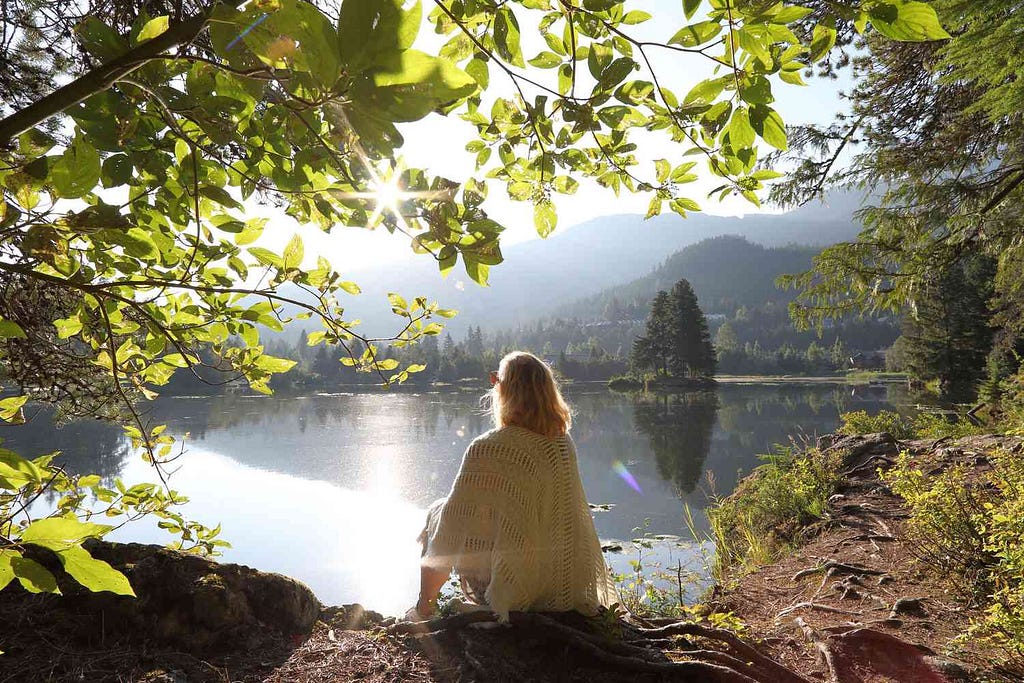
My personal experience
When preparing this research article, I decided to do my own experiment. I made a mood tracker and decided to track my mood for two weeks. For the first week, I spent most of my time inside and tracked my mood for the early morning, morning, afternoon, evening, and night. For the second week, I tried to spend at least 10–15 minutes outdoors and tracked my moods for the same times of day. The moods that I focused on were anger, stress, anxiety, agitation, tiredness, sadness, happiness, and calmness. For the week that I spend inside, I noticed that I would wake up tired everyday and that most days, my tiredness would linger into the late morning. I got agitated and anxious a fair amount of times and stressed and angry a few times. I still had a good amount of times that I was calm and happy. For week two, I still woke up tired most mornings, but the tiredness didn’t linger anymore. I had a lot more happy and calm spaces filled out as well.
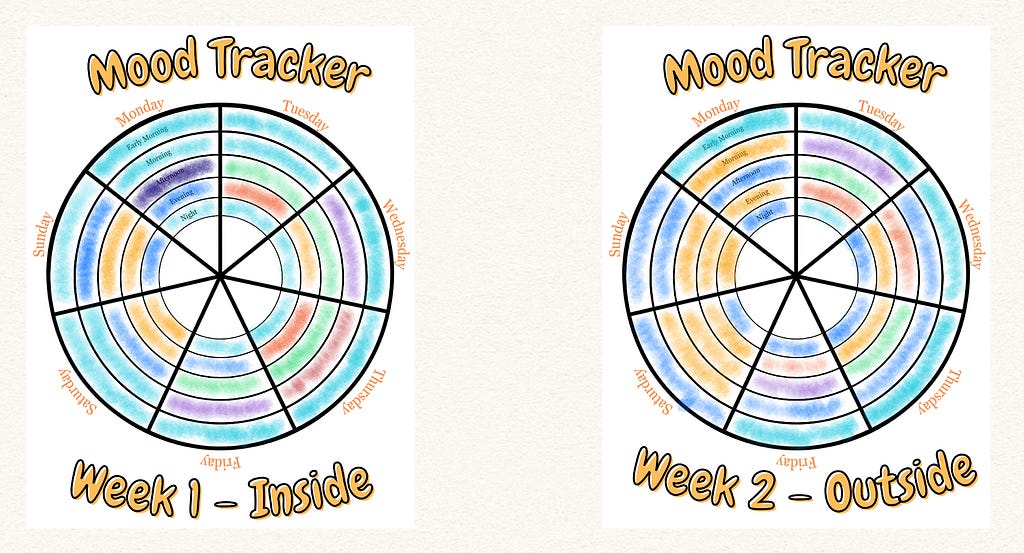
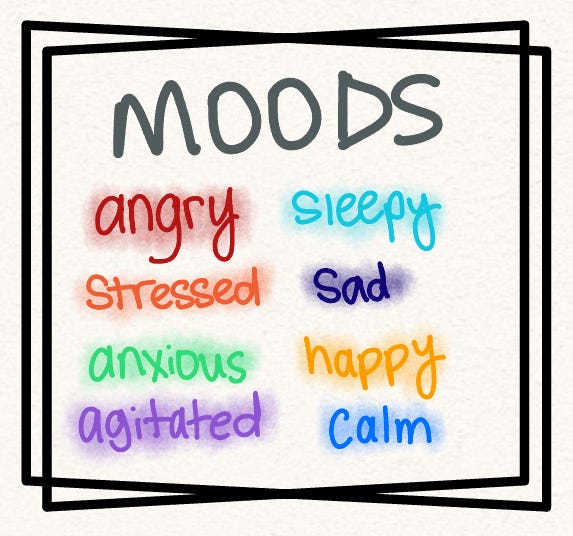
In today’s world, we often overlook how impactful nature is. As a college student, it can be even easier for us to overlook this. However, as we step away from lecture halls and journey onto forest trails, it is important for us to remember that nature is healing. Our planet offers beauty, resilience, solace, and hope. Let’s take advantage of everything that nature has to offer and start to deepen our relationships with nature throughout school and the rest of our lives.

Here are blank copies of my mood tracker if you want to screenshot them and do this experiment yourself and see how much of an impact nature has on your personal mental health!
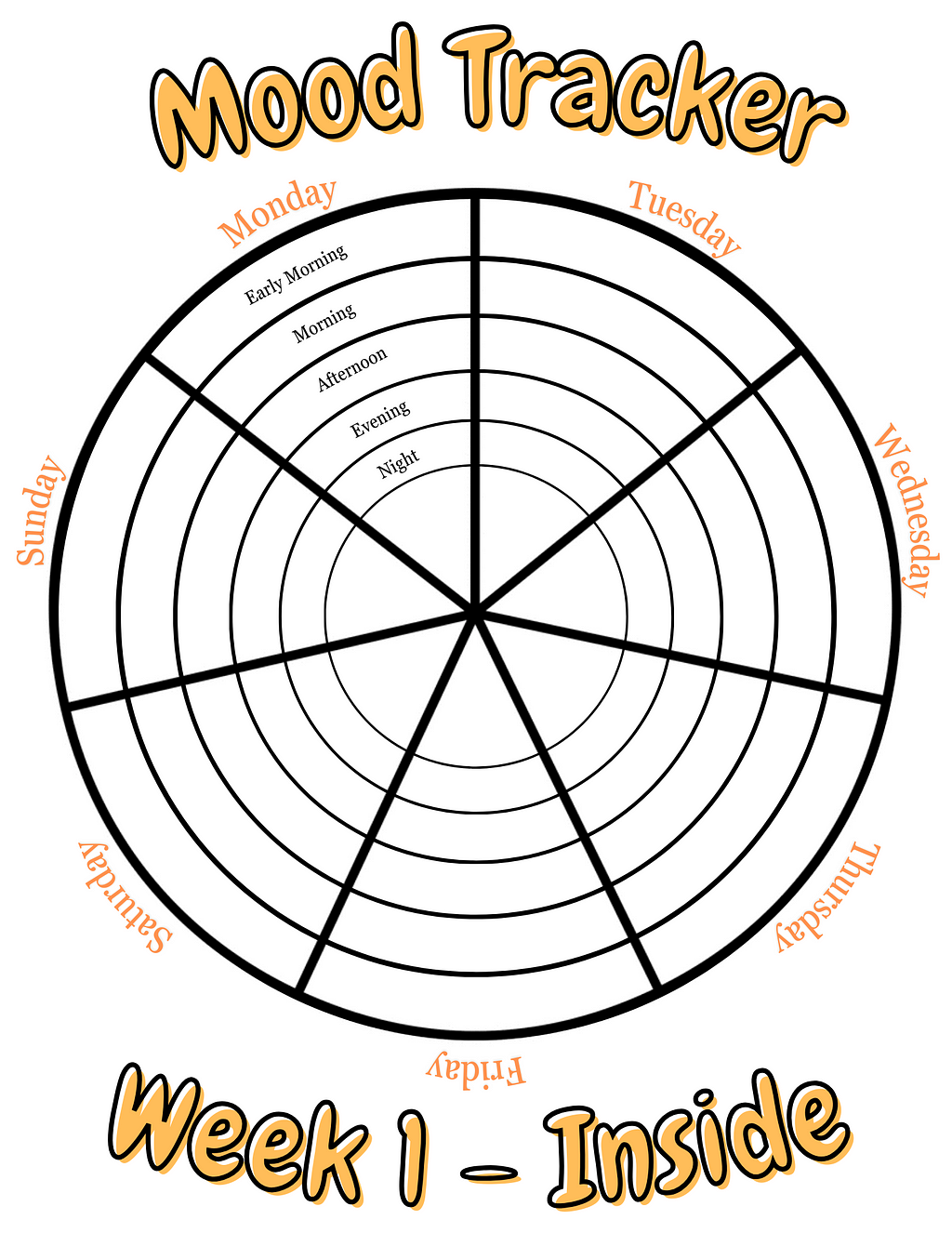

From Lecture Halls to Forest Trails: The Healing Power of Nature was originally published in The Herald on Medium, where people are continuing the conversation by highlighting and responding to this story.






